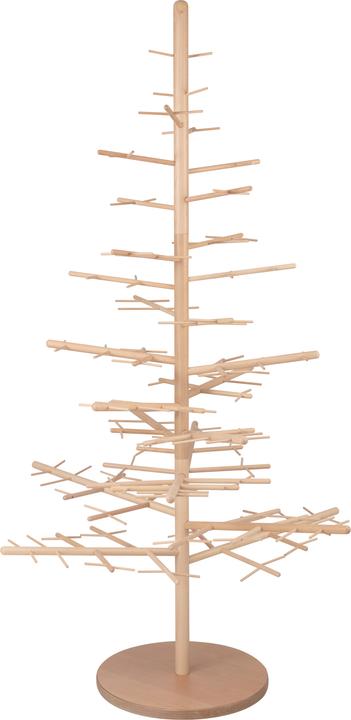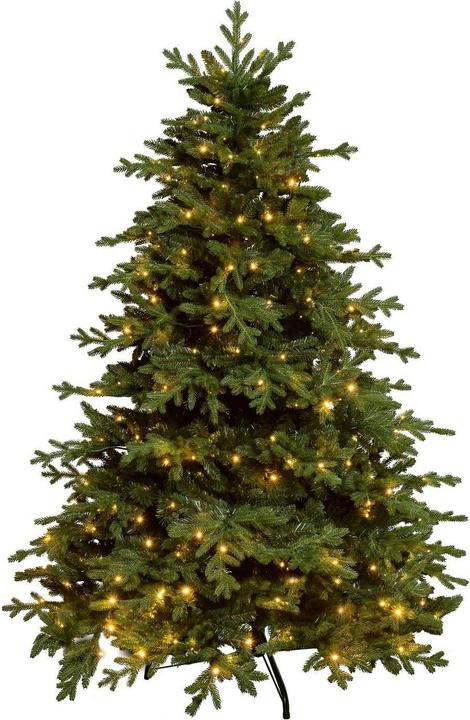

O fir tree, O fir tree, how lasting are your leaves?
Now they are everywhere again, waiting for buyers: blue and red spruce, Nordmann and silver fir, Douglas fir. Coniferous trees that are set to perform their final service as decorative ornaments in our Christmas parlours. But how sustainable is this tradition? And what about the plastic fir?
The search for the perfect Christmas tree has provided the inspiration for many a film scene and sketch. Usually, the men go out and bring home a more or less beautifully grown specimen from the forest or DIY store, where the family is more or less delighted.
Anyone who has experienced a lack of gratitude a few times could think about alternative procurement methods. In principle, nobody has to go out the door for a Christmas tree these days. Of course, Galaxus also has trees in its range that are delivered as quickly as possible or on your desired date.
If you have taken a close look at these trees, you will have noticed that there are "natural" and "artificial" Christmas trees. Another decision you have to make. I'll try to help you a little. The natural specimens first give off the smell of the forest and later lose their needles on your floor. The artificial ones give off a hint of plastic odour at worst, but otherwise behave inconspicuously in every respect and slip back into the box after use. To be taken out again next year and stand at attention.
Such a reusable tree must be a good thing for the environment. Right? Well, it's more complicated than it seems at first glance. Much more complicated. ESU-services GmbH, among others, has determined how sustainable different types of Christmas trees are and created a tool for calculating the life cycle assessment. You can enter all the relevant data in the Excel spreadsheet. All factors are taken into account, including transport and origin, useful life and differences in breeding.
Fertiliser kills the eco-balance of the Northmen
Not surprisingly, a fir tree from the local Swiss forest performs well. However, it is not the short distance from the producer to your home that ensures a good position in the environmental rankings. It is rather due to the fact that Swiss farmers use comparatively few pesticides and fertilisers. The industrial production of mineral nitrogen fertilisers contributes significantly to the CO2 footprint of agriculture. The operators of large Christmas tree plantations in northern Europe are more likely to be sinning here. The huge annual production can hardly be achieved otherwise - despite favourable climatic conditions with summers that are not too hot. Denmark's Christmas tree producers alone export over 10 million trees a year - an estimated 500,000 of which end up in Switzerland. The statistics from the Federal Customs Administration also reveal that most of the trees arrive in Switzerland in November. Incidentally, nobody knows the exact number of Christmas trees and their origin. This is also due to the fact that the customs administration measures the turnover in tonnes. But presumably nobody has ever bothered to calculate the average weight of a Christmas tree. Perhaps no statistician wants to venture that far out onto the branches. Höhöhö!
Don't you dare pick up the tree by car!
What you can calculate pretty well, however, is the amount of CO2 produced when transporting the trees. Here you will be surprised that the tree from Denmark does quite well. Although a tree from Aarhus has to travel 1200 kilometres to Zurich, the CO2 emissions are relatively low. This is because up to 1000 well-packed trees are transported per lorry. As the Swiss Environmental Network calculated, the import of all Danish Christmas trees generates a total of around 600 tonnes of CO2. Converted to an individual tree, however, this is only 1.2 kilograms. To put this into perspective: an economical diesel car already emits around 120 grams of CO2 per kilometre driven. So if you travel ten kilometres to pick up the tree, for example, you produce the same amount of greenhouse gas as a tree travelling from the Danish plantation to us in Switzerland.
By the way, the trees on sale at Galaxus also come from Denmark. According to our purchasing department, these trees are "standard goods", i.e. they do not bear any seals for special sustainability or organic cultivation with little or no fertilisers or pesticides. In the ESU calculation, a Galaxus tree is therefore unlikely to win a flower pot. At least you can offset the CO2 damage caused by the tree through our cooperation partner South Pole. A start.
Your opinion about Christmas tree!
What is important to you when buying?
- Good and cheap - the price must be right.3%
- The main thing - big and powerful!4%
- Sustainable and organic are a must for me.17%
- Without tree it also works!35%
- It doesn't have to be a real tree. I like plastic!5%
- My fir tree comes from the forest next door.35%
The competition has ended.
What about the increasingly popular potted fir trees? With this concept, you order or bring a living tree into your home for the Christmas season. It can then be returned and will be used again in the coming years. According to the ESU calculator, the silver fir beats the fertiliser fir from Denmark, but it also loses out to the neighbourhood fir. In the case of silver fir, storage in large greenhouses has a negative impact on the environmental balance.
So should it be a plastic tree after all? The production costs a climatic fortune. Oil has to be turned into plastic, metal and wire are needed to hold it in place, and the container ship can only make it to the harbour in Basel with heavy oil. But if you start to eradicate the initial sin and keep using the plastic tree year after year - let's say ten - you'll be the environment's favourite.
What you can safely forget, by the way, are claims that a tree grown anywhere is good for the climate because it binds CO2 from the atmosphere. Yes, needles and woody plants can contain up to several kilograms. But they don't stay there forever. At some point, the tree ends up in compost or incineration and, bang, the CO2 is there again.
All right, that may not have helped the Christmas spirit. That's why I recommend something for your eyes and for distraction. Pia Seidel has decorated a very purist tree for Christmas.
Journalist since 1997. Stopovers in Franconia (or the Franken region), Lake Constance, Obwalden, Nidwalden and Zurich. Father since 2014. Expert in editorial organisation and motivation. Focus on sustainability, home office tools, beautiful things for the home, creative toys and sports equipment.
Interesting facts about products, behind-the-scenes looks at manufacturers and deep-dives on interesting people.
Show all




